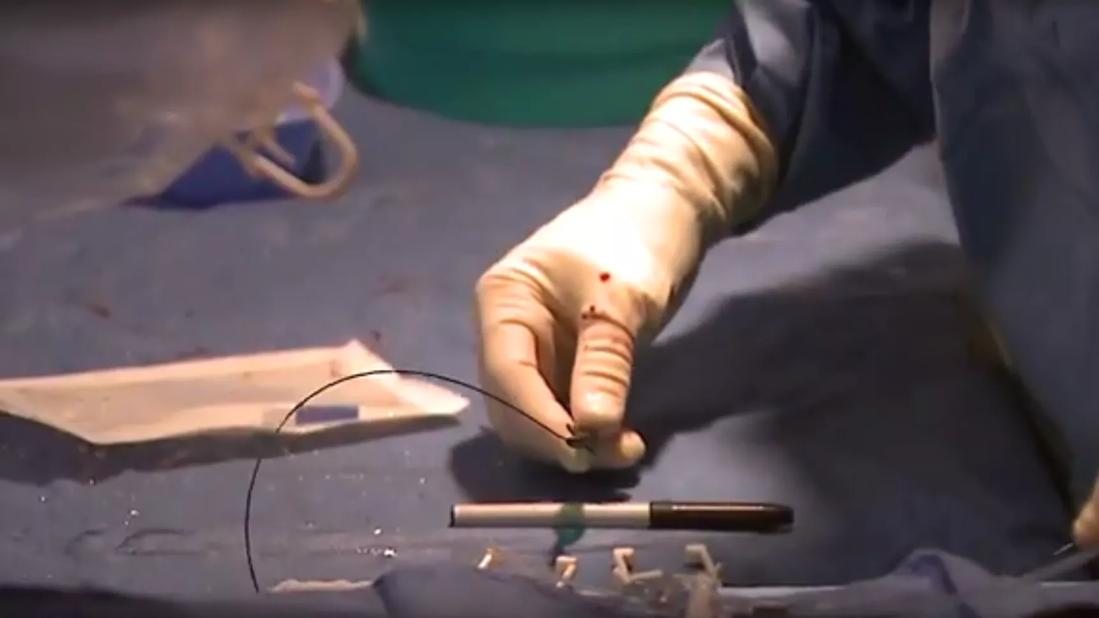
Cleveland Clinic News Service | 216.444.0141
We’re available to shoot custom interviews & b-roll for media outlets upon request.
CCNS health and medical content is consumer-friendly, professional broadcast quality (available in HD), and available to media outlets each day.
images: 0
video: 0
audio: 0
text: 0
About 12-percent of people in the United States suffer from critical limb ischemia, a serious form of artery disease, where blood flow to the legs becomes blocked.
“It’s a very morbid condition. If it progresses it could lead to amputation,” said Mehdi Shishehbor, DO, MPH, PhD, director of endovascular services at Cleveland Clinic.
Now, research shows that a minimally invasive procedure is best to treat this life threatening condition.
A wound that won’t heal
Donna Swanstrom, a 60-year-old grandmother from Ohio, learned she had a severe case of critical limb ischemia when nagging leg and heel pain took a nasty turn.
“I developed a sore on my foot and I’m like, this is not good,” said Swanstrom.
Swanstrom had very little blood flow to her foot and without circulation, the sore wouldn’t heal, leaving her in excruciating pain.
“My foot was dying. It was literally dying,” she said.
Restoring blood flow
Swanstrom was transferred to Cleveland Clinic where Dr. Shishehbor performed a minimally invasive procedure which involved threading balloons, stents and wires through a catheter to re-vascularize, or open up, arteries in the leg and improve blood flow.
Recent research shows this minimally invasive procedure often trumps traditional open surgery.
“Revascularization is the only therapy that has been shown to have significant impact in patients with critical limb ischemia, has been shown to prevent amputation and by doing so most likely impacts longevity,” said Dr. Shishehbor.
Circulation helps heal
Swanstrom’s procedure was successful, blood flow was restored and her leg was saved.
“The next day you could see the ulcer on my foot healing. It was just incredible,” said Swanstrom.
Dr. Shishehbor said there are many new techniques and tools available to people suffering from critical limb ischemia and amputation should only be considered as a last resort.
Amputation of the leg can have a serious impact on someone’s life and it’s important to seek a second, or even a third, opinion before having it done, he said.
NOTE: Members of the media may download broadcast-quality video and audio. Please email us at ccnewsservice@ccf.org for download information.
Cleveland Clinic is a nonprofit multispecialty academic medical center that integrates clinical and hospital care with research and education. Located in Cleveland, Ohio, it was founded in 1921 by four renowned physicians with a vision of providing outstanding patient care based upon the principles of cooperation, compassion and innovation. Cleveland Clinic has pioneered many medical breakthroughs, including coronary artery bypass surgery and the first face transplant in the United States. Cleveland Clinic is consistently recognized in the U.S. and throughout the world for its expertise and care. Among Cleveland Clinic’s 81,000 employees worldwide are more than 5,743 salaried physicians and researchers, and 20,160 registered nurses and advanced practice providers, representing 140 medical specialties and subspecialties. Cleveland Clinic is a 6,690-bed health system that includes a 173-acre main campus near downtown Cleveland, 23 hospitals, 276 outpatient facilities, including locations in northeast Ohio; Florida; Las Vegas, Nevada; Toronto, Canada; Abu Dhabi, UAE; and London, England. In 2023, there were 13.7 million outpatient encounters, 323,000 hospital admissions and observations, and 301,000 surgeries and procedures throughout Cleveland Clinic’s health system. Patients came for treatment from every state and 132 countries. Visit us at clevelandclinic.org. Follow us at twitter.com/CleClinicNews. News and resources available at newsroom.clevelandclinic.org.
Editor’s Note: Cleveland Clinic News Service is available to provide broadcast-quality interviews and B-roll upon request.